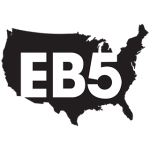
After several stopgaps, Congress passed the omnibus spending package on March 11, 2022. This spending package included an EB-5 reform bill, known as the EB-5 Reform and Integrity Act of 2022. The Integrity Act marks the most significant change to the EB-5 investment program since its beginning more than 30 years ago. On March 15, 2022, President Biden signed the spending package, known as the Consolidated Appropriations Act, which put all new measures into immediate effect.
What’s Included in the EB-5 Reform Bill
- After the longest suspension in its history, the EB-5 Regional Center Program received reauthorization through September 30, 2027. This is the longest reauthorization the program has received since 2015.
- Pending I-526 petitions from regional center investors will be allowed to continue in the EB-5 visa process, and any petitions made on or before September 30, 2026 will be adjudicated without dependence on the program’s reauthorization. This will avoid having investors in “processing limbo” should the program experience another lengthy suspension.
- Minimum investment thresholds have increased once again from $500,000 for projects in targeted employment areas (TEAs) to $800,000. Projects not located within TEAs now have an investment threshold of $1,050,000, up from $1,000,000. To account for inflation, these thresholds will be adjusted every five years.
- United States Citizenship and Immigration Services (USCIS) will now be in charge of designating high-unemployment TEAs.
- Regional center EB-5 investment projects will still be allowed to count indirect employment to meet the job creation requirement, but only for 90% of the jobs. This means that these projects will now have to create at least one direct employment position.
- Form I-526 and Form I-485 can now be filed simultaneously.
- New integrity measures have been put into place to ensure transparency in the EB-5 process. For example, a new integrity fund has been created, requiring regional centers to contribute $10,000–$20,000 each year.
- 20% of the EB-5 visa pool will be reserved for projects in rural TEAs.
The Impact of These Changes on Current and Potential Investors
The most pressing issue in the EB-5 investment industry has been the reauthorization of the regional center program. The program had been defunct since June 2021, leaving investors with pending I-526 petitions without any guarantees regarding what would happen to their investments and their dreams of U.S. permanent residency. The Integrity Act renews the trust in the program as a safe investment with the “grandfathering” clause, which ensures that each I-526 petition will be adjudicated regardless of the reauthorization of the program. This will also avoid further litigation against the EB-5 program.
With the lapse in the regional center program, direct EB5 investment projects have taken center stage in the industry, and all direct investors have had “current” processing status for months. This may change in the near future, with the reauthorization of the regional center program potentially creating backlogs for countries with high demand, such as China. These countries may experience cutoff dates, which will create challenges in the traditionally slow adjudication process. Faster processing times for I-526 petitions are now more important than ever. Investors from high demand countries may be more interested in rural TEA projects, as those will be the priority and may receive approval prior to cutoff dates being imposed.
Advantages for Holders of Different Visas
Investors who currently reside in the United States under an H-1B or E-2 visa benefit tremendously from the ability to file Form I-526 and I-485 concurrently. Submitting both forms at the same time allows them to receive more immediate work authorization and avoid consular visa processing. In addition, when submitting Form I-485, they will not be held liable for any status violations less than 180 days.
Indian nationals, who made up 75% of the H-1B visas granted in fiscal year 2020, may be particularly interested in filing Form I-485 simultaneously with Form I-526. However, there is an exception to the simultaneous filing, in that investors from high-demand countries that are subject to cutoff dates may not file both forms at the same time. Since India is at risk of cutoff dates being imposed in the near future, Indian nationals with H1-B visas who are planning on investing in an EB-5 project should not delay in contacting an immigration attorney to begin the process.
Expedited EB-5 projects are also a good option for H1-B and E-2 visa holders. These projects allow investors the benefit from decreased processing times for I-526 petitions. These typically offer the most benefit to investors who are currently residing outside of the United States, as they would be able to relocate within a matter of months, rather than waiting years for their conditional permanent resident status. It would be wise for investors to consider projects with the possibility of being granted expedited status.
The new changes to the EB-5 investment industry have the potential to increase the transparency and efficiency of the EB-5 visa process for all stakeholders. While investors stand to gain the most benefits, this extensive reform holds the promise of improving the industry as a whole. EB5AN is always available to provide guidance on the process.
